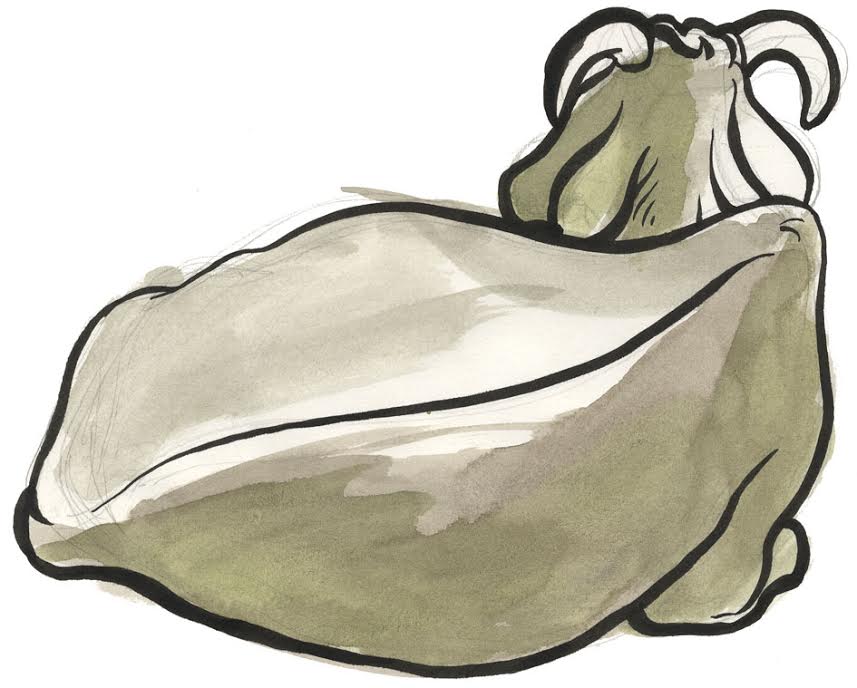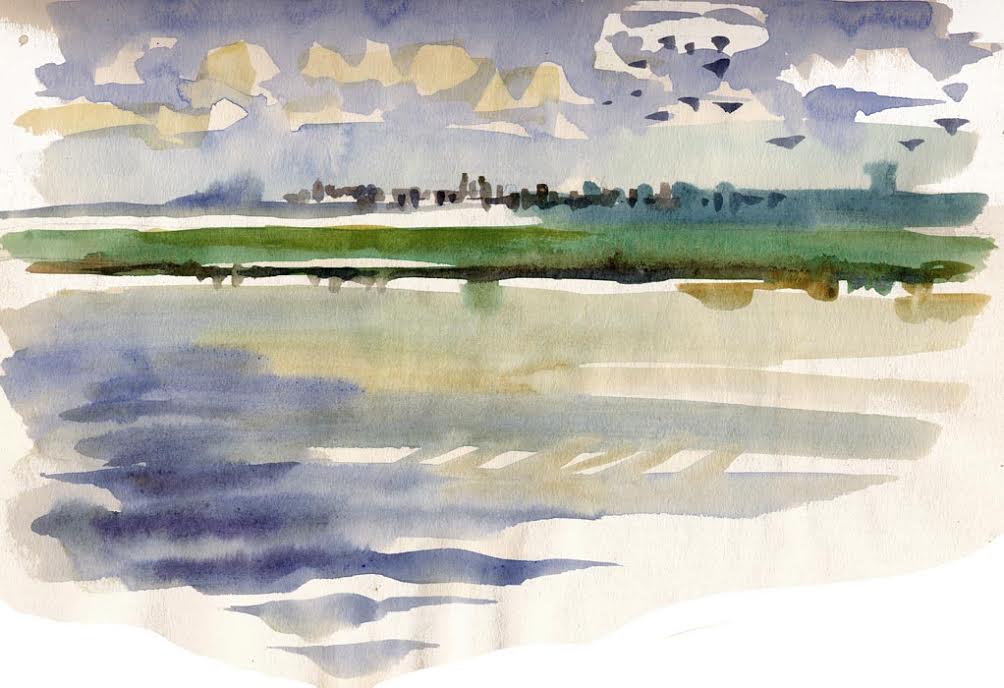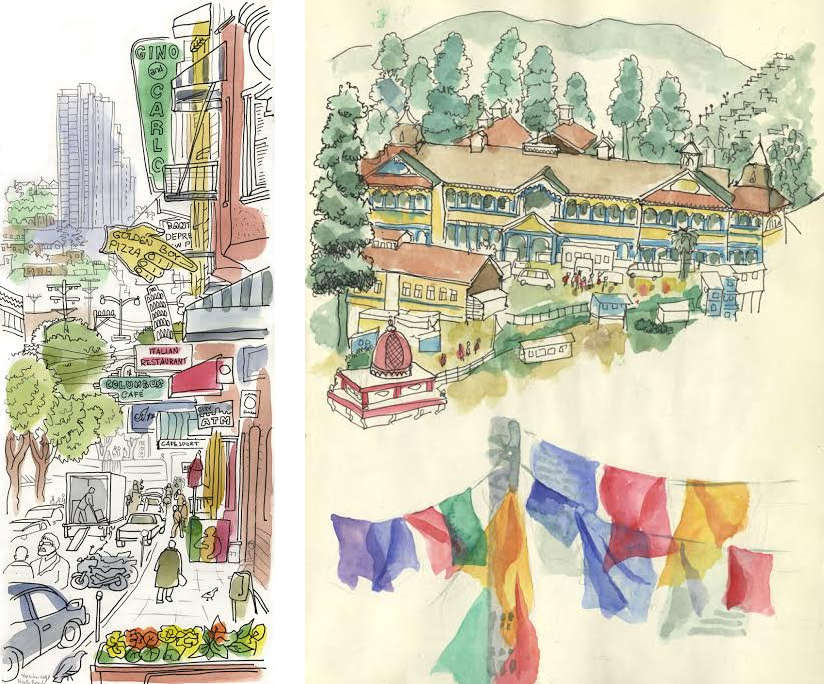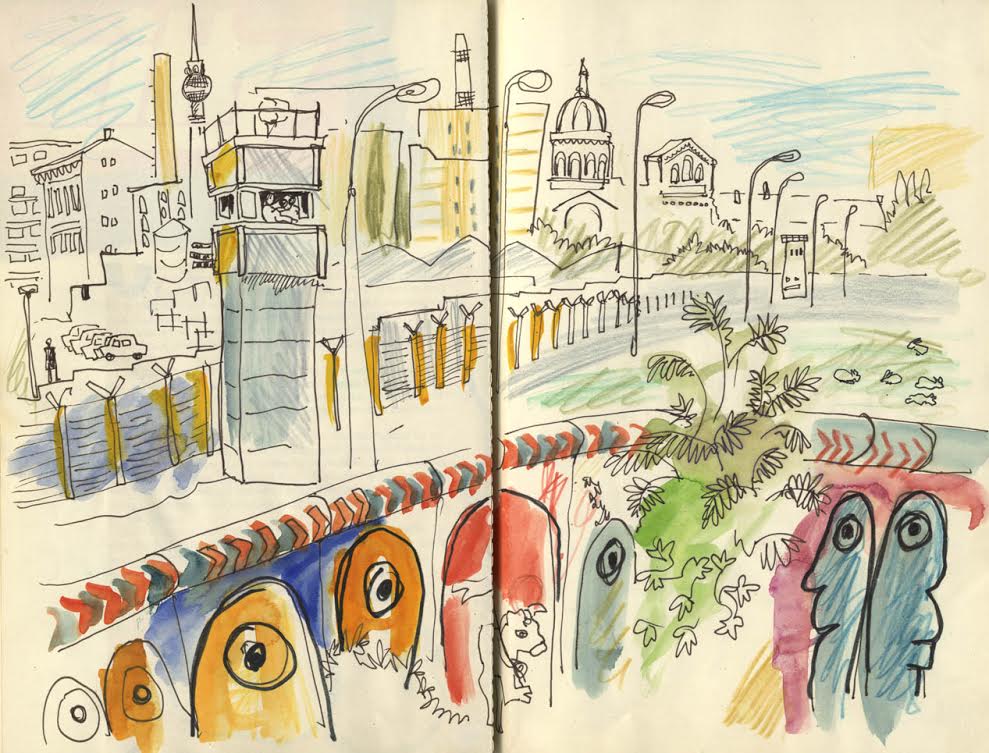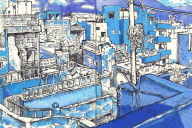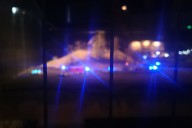Jane Smith is a London-based artist who creates amazing, sketchy style illustrations of the world around her. From Darjeeling to San Francisco and Naples, she’s definitely been around! With over 30 years of work under her belt, it was no easy task selecting just a few pieces to share here, but I certainly enjoyed sifting through all her beautiful illustrations of places around the world in the process. Enjoy!
1) Your illustrations have a very unique style to them. How did this develop?
I have been keeping sketchbooks for many years, since graduating, and my style has developed as I have gone along. In the early days my sketches were more detailed, then I gradually learned to simplify them bit by bit. I originally worked in pen, pencil, coloured pencils and a combination of two or three of these.
One day, while sitting by a canal in Amsterdam, seeing the sunlight reflecting from the windows of the house opposite, I took out my watercolours and did my first watercolour sketch. Since then, my watercolour box and sketchbook have never been far apart.
For some time I used the watercolour as a fill-in, albeit in an immediate, sketchy style, but more recently I have simplified the areas of watercolour to large graphic areas, overlaying a line drawing.
Diving at the London Olympics
At other times I have used watercolour on its own, watercolour and pencil, pencil alone, pen alone, and more recently have been scanning pen sketches and colouring them digitally.
I spent a lot of time in India, and this helped to develop my style further as there was so much to see, and as I would often be sitting surrounded by onlookers. This encouraged me to speed up and edit unneccessary detail, and as people often asked to be drawn, I was forced to improve my figures and faces, which I had never found easy but this really helped.
Pushkar, India
Cow in India
I love drawing buildings and street scenes, and this has made my drawings more graphic. I always like to have figures and/or animals in to add life, and they are usually quite squiggly and not over-accurate.
2) Let’s talk about process. What steps do you take when creating each piece?
I tend to like a scene that has interesting buildings; if they are at different levels and angles it helps.
I usually work from life, with a portable stool, book/pad etc. Usually I will do a rough pencil sketch, followed by a more detailed one in ink (usually a waterproof roller type pen from most stationers’), then rub out the pencil and apply either a watercolour wash or infill.
Sometimes I will use pencil instead of ink, sometimes just watercolour. I use various types of paper, but tend to prefer a thin watercolour paper with some texture.
St Valery, France
Sometimes I just do a pen drawing and take a photo of the scene afterwards, just for colour reference, to colour in later.
Sometimes, when applying digital colouring to a sketch, I will use flat colour, but I also have a library of hand scanned textures that I use to drop in as well.
Occasionally I will work in line on a coloured paper then scan it in and select and adjust areas to create colours, light, shadows etc.
Liverpool Tate
3) Aside from travel, what inspires your work?
For years, travel has been my driving force, but in the last few years I have been concentrating on things closer to home, and find that there are endless possibilities locally too. I have been documenting the changes in my local area (Dalston, east London). This has led to several exhibitions locally and commissions to draw people’s houses and shops. Dalston is a buzzing, lively area and I enjoy capturing the life and energy of the place.
Dalston, London
Old Theatre, Dalston, London
4) What do you hope your illustrations tell viewers about the places they depict?
I hope to harness the life end energy of a place, with plenty of quirky details, creating a snapshot in time. I hope the viewer can feel some of the atmosphere of the place.
5) You have clearly travelled a lot. Where has been your favourite place to sketch and why?
There are so many wonderful places, but my favourites are all towns/cities on hills. It’s a close run between Darjeeling in India and San Francisco. I like to be able to include some perspective and far views, and the presence of hills allows this easily. There are few hills in my immediate vicinity.
Darjeeling has an atmosphere unique to Indian hill stations, a combination of the faded decorative colonial houses, a strong Tibetan influence, stunning landscape, lovely views, and cool, fresh air after the heat of the plains. There’s a nostalgic feel to the town, with some parts feeling more British than Britain, in a storybook way.
San Francisco and Darjeeling
San Francisco has so much – amazing views everywhere, colour, beautiful houses, the hills of Marin in the distance – an artist’s dream, really.
Naples is also up there among my favourites.
Naples
Having been sketching for years, there have been many changes and I have a unique record of things no longer here.
Some famous examples are the Berlin Wall, the view from the World Trade Center, New York, and, sadly, some views of Bhuj in Gujarat, that suffered a terrible earthquake a few weeks after my visit. There are also many lesser known changes, and this is, of course, a continuous process.
The Berlin Wall
6) If you could travel anywhere in the world and illustrate it, where would it be and why?
I think it would again have to be a town/city on hills or near the sea.
I have no number one choice as yet, but in the running would be Porto, Rio de Janeiro, Vancouver, Marseille, Fez, Stockholm and many more besides.
Dalston, London
7) Finally, where has been your favourite place in general (illustrations aside) and do you have any tips to offer readers who might be thinking of visiting there?
I would actually say London, but am not going to include it as I live there, so I think San Francisco takes the top spot, although it’s a tough call. Even without the sketching, it has a magical atmosphere, one is constantly surprised by view after view over the tops of the steep hills. The light is magical and everything can look very three dimensional, especially against a bright blue sky. I would bring a good pair walking shoes. It is an easy city to deal with, and, like a lot of American cities, it is built on a grid plan so it is easy to find your way around.
You can see more of Jane’s work on her blog.
Finally… Musement, a site offering museum tickets, art tours, and cultural activities has kindly let Wanderarti readers get €5 off purchases. Just use the code WANDERARTI and you can get discounted offers all over Europe! 




